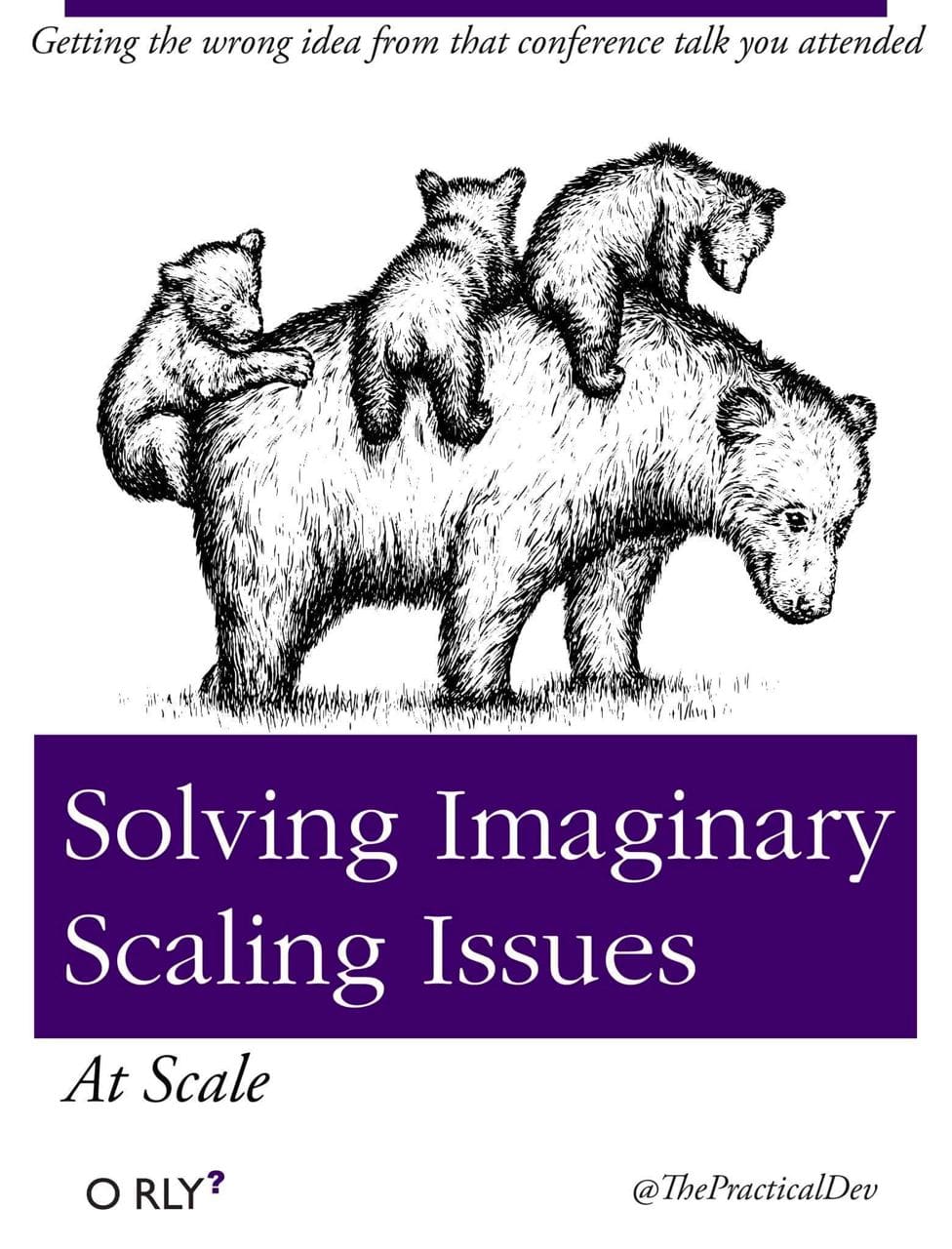
In the ever-evolving cityscape of Devtopolis, a metropolis famed for its soaring data structures and bustling networks, there existed a peculiar phenomenon known to its inhabitants as "Solving Imaginary Scaling Issues." This curious pursuit was often sparked by the tales of distant lands and their colossal architectures, tales that were brought back by travelers to the annual Gathering of the Coders, a grand conclave where developers from across the digital realms convened.
Our narrative follows the journey of Pat, a developer whose ambition was as vast as the databases they dreamt of one day building. Pat, having recently returned from the Gathering, was abuzz with ideas and visions of scalability, their mind alight with the grandiose architectures and performance optimizations heralded by the sages of the stage. "At Scale" became the mantra, a lodestar guiding Pat's every decision, irrespective of the humble needs of their current projects.
Driven by the fervor to prepare for the hordes of users and petabytes of data that surely lay just over the horizon, Pat embarked on a quest to fortify their applications against the specters of downtime and the bogeymen of lag. The projects under Pat's care were simple in nature, designed to serve the modest needs of the local denizens of Devtopolis, yet Pat saw in them the potential for growth exponential.
Thus began the grand endeavor to implement distributed systems, microservices, and data sharding strategies that were the envy of enterprises, all in anticipation of a future that shimmered with the promise of scale. Pat poured over configurations, stitched together services, and wove complex webs of asynchronous calls, each more intricate than the last.
However, as the weeks turned to months, a realization began to dawn. The users, though loyal and steady, numbered in the hundreds, not millions; the data, while valuable, filled but a fraction of the vast storages Pat had provisioned. The elegant solutions, designed to conquer scaling issues of mythic proportions, sat largely idle, like dragons slumbering in their lairs.
The costs, both temporal and monetary, began to mount. The complexity of the systems introduced new and unforeseen challenges, turning simple updates into Herculean tasks and transforming straightforward debugging into a quest for a needle in a haystack. The pursuit of imaginary scaling issues had led Pat astray, chasing phantoms on the wind.
In time, Pat sought counsel from the elders of Devtopolis, wise developers who had navigated the shifting sands of technology for decades. They listened to Pat's tale with understanding and spoke with the gentle clarity of experience. "The right solution," they said, "is the one that meets the needs of today while leaving the door open for the morrow. Growth is a journey, not a destination, and each step must be measured."
Heartened by their wisdom, Pat set about simplifying, focusing once more on the needs of the present while keeping an eye to the future. The microservices became modular components within a more manageable monolith, the distributed databases were consolidated, and the architecture was streamlined to balance performance with maintainability.
The tale of "Solving Imaginary Scaling Issues: At Scale" became a lesson for all of Devtopolis, a reminder that the pursuit of scalability must be grounded in reality, informed by the true needs of the project rather than the imagined demands of a future uncertain. Pat's journey taught them the value of pragmatism, the importance of adaptability, and the wisdom of building not for the conference talk of tomorrow but for the users of today.
And so, as Devtopolis continued to grow and thrive, its developers walked a path guided by the lessons of the past, building systems that were robust yet flexible, complex yet comprehensible, ready to scale not just in their dreams, but in the reality of the digital world they called home.